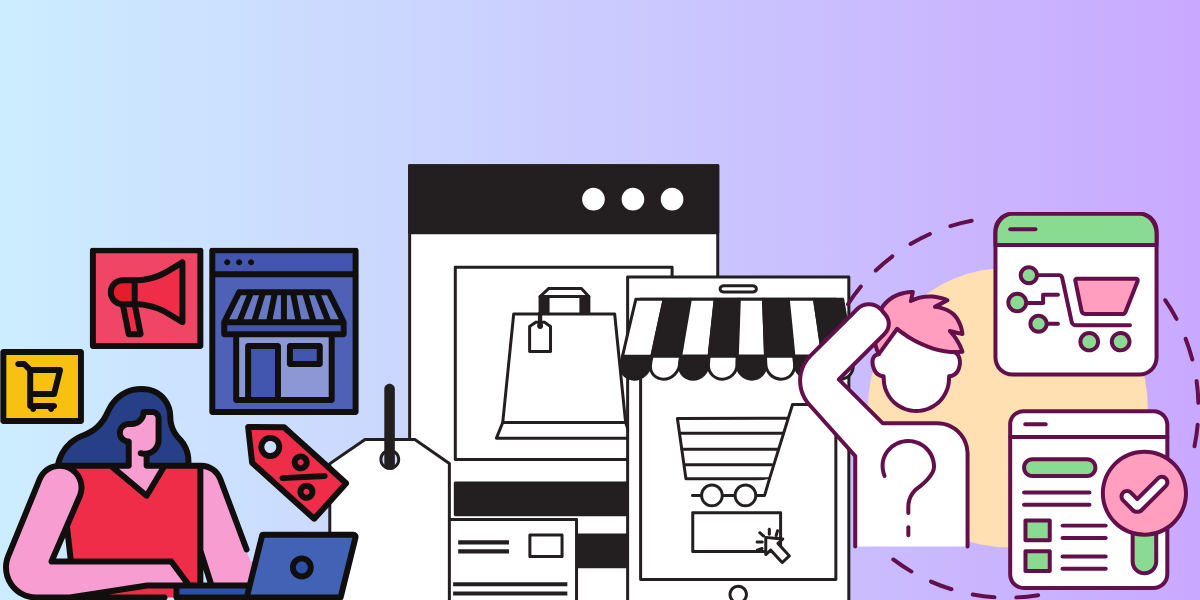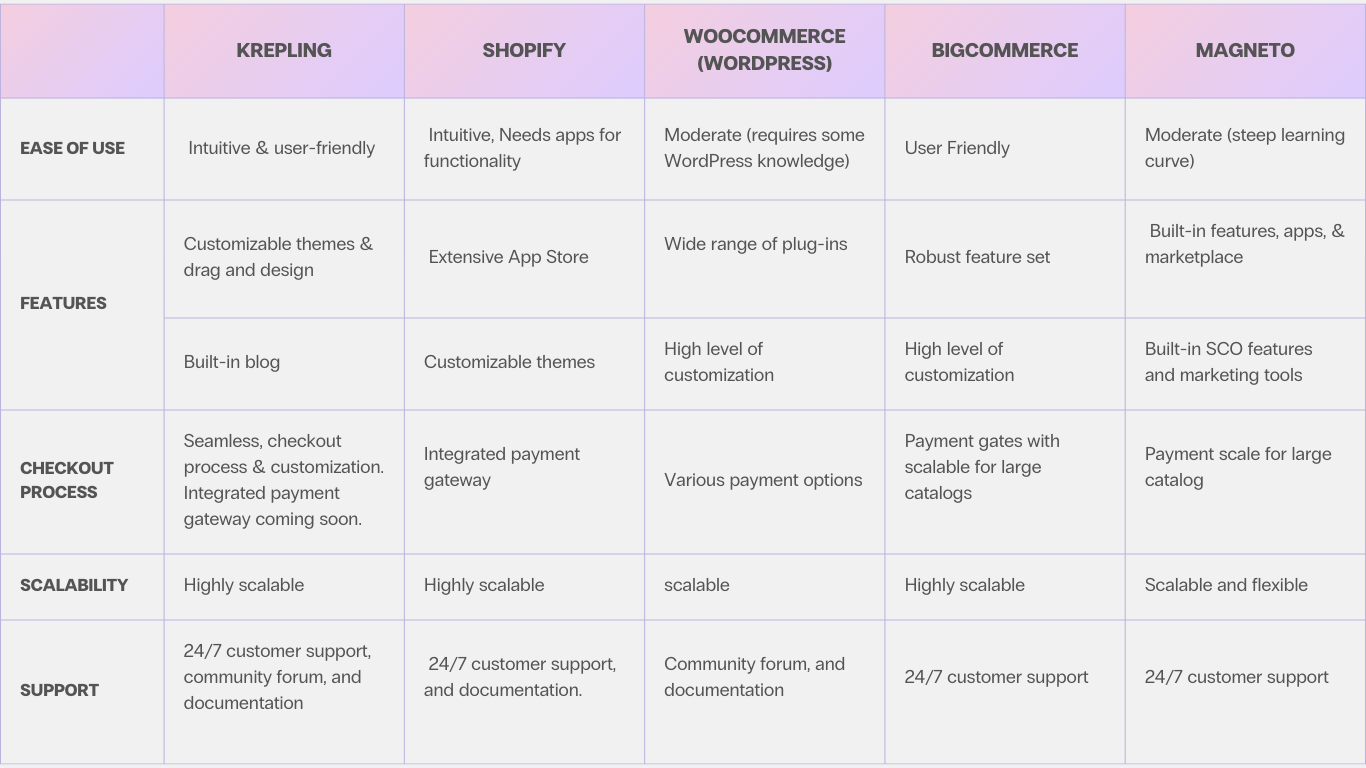Unlocking Success: The Ultimate Guide to Choosing Your E-commerce Platform

Did you know choosing the right e-commerce platform can make or break your online business? With countless options available, finding the perfect fit can feel overwhelming. But fear not! In this blog post, we'll guide you through selecting the ideal platform to kickstart your online venture. We discuss key aspects such as understanding your business needs, assessing your products/services, and key factors to consider. Using this post we'll guide you effortlessly to the right commerce partner for your business.
What is an e-commerce platform?
An e-commerce platform is a digital framework or software application that enables businesses to sell products or services online. It provides a virtual storefront where businesses can showcase their offerings, manage inventory, process payments, and handle other aspects of online sales operations. These platforms vary in complexity and features, ranging from simple DIY solutions for small businesses to robust, customizable solutions for large enterprises.
Key features include product catalog management, shopping cart functionality, payment processing, order management, customer management, inventory management, security features, marketing and promotion tools and we could go on!
Popular e-commerce platforms include
Krepling, Shopify, WooCommerce (built on WordPress), Magento, BigCommerce, and Squarespace Commerce among others. Each platform has its strengths, pricing models, and customization options, allowing businesses to choose the one that best fits their needs, skills, and budget.
How to choose the right e-commerce platform for you?
1. Understanding Your Business Needs:
Define your goals: Clearly outline what you aim to achieve with your e-commerce platform. Whether it's increasing sales, expanding reach, or enhancing customer experience, understanding your goals will help you prioritize features and functionalities.
Assess your products/services: Consider the nature of your offerings, such as physical goods, digital products, or services. Some platforms may be better suited for specific types of products, while others offer more flexibility.
Identify your target audience: Understand your target market's preferences and behaviors. Factors like demographics, shopping habits, and preferred payment methods can influence your choice of platform and features.
2. Key Factors to Consider:
Ease of use: Choose a platform that is intuitive and user-friendly, both for you as a business owner and for your customers. A straightforward interface will save time and reduce frustration.
Features and customization options: Look for essential features like inventory management, payment processing, and order tracking, as well as customization options to tailor the platform to your brand's unique needs.
Scalability and flexibility: Consider the platform's ability to grow with your business. It should accommodate increases in traffic, sales volume, and product offerings without compromising performance or requiring frequent migrations.
Here’s an E-commerce Platform List Comparison:

Why Choose Krepling:
Krepling stands out as an exceptional e-commerce platform for several reasons:
1. Intuitive Platform Design: Krepling boasts an intuitive platform design that simplifies the e-commerce journey for businesses of all sizes. With its user-friendly interface, navigating through the platform is effortless, enabling users to focus more on growing their business and less on grappling with complex technicalities.
2. No Code Required: Unlike many other e-commerce platforms that may require coding knowledge for customization, Krepling eliminates this barrier by offering a code-free environment. This empowers users to personalize their online store without any coding expertise, making it accessible to a wider audience, including entrepreneurs with limited technical backgrounds.
3. Drag-and-Drop Customization: Krepling's drag-and-drop customization feature further enhances user experience by allowing effortless customization of website elements. Whether it's tweaking the layout, adding product listings, or refining the aesthetics, users can simply drag and drop elements into place, streamlining the process of creating a visually stunning and functional online store.
4. Centralized Builder: Krepling serves as a centralized builder, consolidating essential business operations into one cohesive platform. By eliminating the need for disparate apps or integrations, Krepling simplifies management tasks, enhances efficiency, and provides a seamless experience for users. Everything can be managed from a single dashboard, from inventory management to order processing and marketing campaigns.
5. Comprehensive Solution: With Krepling, businesses can enjoy the convenience of having all their e-commerce needs met in one place. From building and managing their online store to handling transactions, inventory, and customer interactions, Krepling offers a comprehensive solution that streamlines operations and fosters growth.
6. Scalability and Flexibility: Krepling's platform is designed to grow alongside businesses, offering scalability and flexibility to adapt to evolving needs. Whether a business is just starting or experiencing rapid expansion, Krepling provides the infrastructure and tools needed to support growth without compromising performance or user experience.
Krepling distinguishes itself as a top choice for e-commerce entrepreneurs seeking a user-friendly, customizable, and centralized solution for building and managing their online stores. With its intuitive design, code-free customization, and centralized builder, Krepling empowers businesses to thrive in the competitive e-commerce landscape while simplifying their operational workflows.
Making the Decision:
Evaluate your options: After carefully considering your business needs, key factors, and available platforms, weigh the pros and cons of each option. Consider factors such as cost, ease of use, scalability, and support.
Trial or demo: If possible, take advantage of free trials or demos offered by e-commerce platforms to test their functionality and suitability for your business before making a final decision.
Our Conclusion:
Choosing the right e-commerce platform is a crucial decision for the success of your online business. By understanding your business needs, assessing available options, and considering key factors, you can make an informed choice that aligns with your goals and objectives.
Ready to take your e-commerce venture to the next level? Explore the features and benefits of Krepling, a user-friendly and customizable e-commerce platform that streamlines operations and fosters growth. Sign up today and discover how Krepling can help you build and manage a successful online store.

